The snowshoe racing season is underway! Major annual events occur as the USSSA Dion Snowshoe National Championship Qualifiers begin their calendar in December, culminating at the February 24-26, 2012 Frisco, CO championship event. Here are ideas to consider for an enjoyable–and perhaps better–race and race day.
1. Often driving to a national qualifier or other important snowshoe race involves hours in your personal hot rod sled to get there. It is important to remember the drive time is actually prerace prep time where important steps are taken for body and mental fueling. A simple failure like forgetting a meal can ruin your athletic performance. I drink the Wilderness Athlete’s High Performance Meal Replacement shakes that I pre-mix and have ready in the refrigerator so when leaving there is no rushing around; in fact, your entire race-gear program should be packed and ready to load the night before.
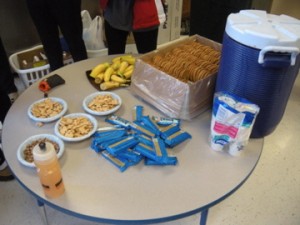
Healthy fruits and snacks are at aid stations like this one at the Whitetail USSSA Qualifier, Riverfalls, WI
I time my drink so four hours before the race’s start I consume my favorite early morning flavor, vanilla. Don’t take chances buying random goodies at the gas station along the way; such choices might create mayhem like a tornado in the stomach. Why risk your race?
Music provides the ideal atmosphere for thinking through your prerace chores, strategy for the race, and how you expect to race the finish. The time-in-car can be used to focus your thoughts so nervousness is kept at bay.
2. On those frozen days like these two snowshoers are experiencing
(about -10 F outside the tent; inside it’s a balmy 0 F), keeping the energy levels up at the start and replenished at the finish (this photo) is a key. During the race eat, too. At the Winterrific State Championship Snowshoe Race in a Minneapolis suburb, there is the USSSA qualifying distance of six miles, but more daunting is a 10-mile and a 20-mile start, too.
Those two races are long, and provide plenty of time on snow for exertion; the need to add fuel for the body on a consistent basis is not lost. I carry Wilderness Athlete Performance bars and gels to supplement aid station fare. Whatever choices you make, just don’t get caught without food. Energize with good calories.
3. Tackle the administrative details early on race day. Steve Shelerud and I arrived at the Boulder Ridge Snowshoe Race qualifier north of Duluth hours before the start, which meant we secured a prime parking spot.
Access to one’s vehicle and supplies is critically important, so much so that it should be a major consideration on one’s plan. Adding or subtracting clothes, running back to make a last-minute adjustment, all of those things are available to you if the vehicle is handy.
Another advantage: when registration opens, one can get their race number, perhaps a timing chip if the event uses those and the goody bag. Getting that step out-of-the-way is a key (see photo above of Shelerud) because, yes, you will have pre-registered. Why not? There is generally a generous discount to do so plus nothing concentrates focus like a date set for a race.
You may plan out your entire season like Snowshoe Magazine writer, Brad Canham, does with a strategy to peak at the national championships.
Then, a racer has plenty of time to prepare for the day’s conditions and hasn’t had the hassle of waiting in line.
4. Keep safety top-of-mind. Snowshoes are appliances of a sort. They can hurt you. They have crampons which are constructed with various metals shaped in order to be sharpish, so the trail can be handled easier. That means they can filet you much like this fish that was given by the Chippewa Trail Ultra to its men’s winner.
Actually Wynn Davis, very speedy on his own right, created the fish plaque from wood and other pieces; but you get the idea. The most hazardous moment of a race is the start. You can’t assume everyone knows not to step on someone’s snowshoe, or a competitor won’t trip of their own volition and land smack dab in front of you or worse, on you. While waiting for the gun or horn, allow space from those in front of you, and make sure others around you do the same. “Be safe out there” was the motto of the Hill Street Blues’ police force at the beginning of every episode; adopt it as your own.
5. Be nice to volunteers and spectators like Nikki Kimball, USSSA Women’s National DION Snowshoe Champion and medalist four times. Even though she is generally up front and by herself, she smiles and is
exhibiting fun. I know the feeling, though I am at the rear with the gear. But like Kimball . . . I am by myself.
6. When you find yourself running out of energy fearing the ability to finish, consider this technique: count down the tenths of a mile remaining until the finish. Yes, you estimate the distance (like choosing a tree or landmark approximately 500 feet ahead), and upon reaching it, subtract that from the finish, and choose the next point. This keeps the mind occupied while your quad choir cramping your legs is singing its chorus of pain.
7. Treasure your rewards from the event like the ubiquitous shirts or other gifts. Long afterward, the things you will remember are those very specific
times on the trail when you were passed unexpectedly, you snuck by someone who is faster than you, or someone said something nice about your effort. Those memories can flood your thoughts as you wear the event shirt at the medals ceremony, on the way home or the next time you’re at the grocery. Enjoy them.
8. If you’re unhappy about something regarding the event, consider NOT saying anything about it on race day. First, with time your calmness may return so there is no confrontation. You may find whatever it was that bugged you no longer does. Second, don’t write or call with abusive language. How do you solve it?
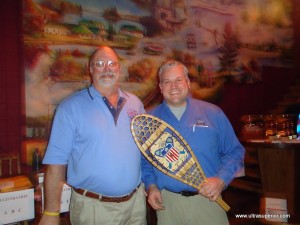
USSSA Sports Director, Mark Elmore presenting award to 2011 Championship host, PC Rasmussen, Lakewoods Resort
Volunteer to head up the area that created the challenge you perceived. Besides, who could ever fuss with nice guys like USSSA Sports Director, Mark Elmore (L) and P.C. Rasmussen, owner Lakewoods Resort at the 2011 Cable National Championships.
Unless, of course, it’s Bob Dion (orange jacket, below) who never seems to slow down. Epic races happen when others are around him.
10. If you’re lucky you can pick up some great free stuff, too, just like this photo depicts. Snowshoe manufacturers and those who support the sport are often incredibly generous to the activity. The USSSA DION Snowshoe Nationals are a wonderful time to enjoy the camaraderie of the sport, the people, and the fun known as snowshoe racing.
11. And a bonus: Finish with a flourish;
the crowd will love it, you’ll feel better about the day, and, hey, some drama helps spice up not only life but also a pristine sport. Wear some colors, go for it, but of course have fun.
Then pack up your bags and head to Frisco as all roads lead to their 2012 DION Snowshoe USSSA National Championships.
Twitter @iHarmonizing
Photo Credit: Jim McDonell, Whitetail USSSA Qualifier Aid Station

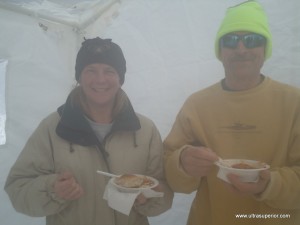
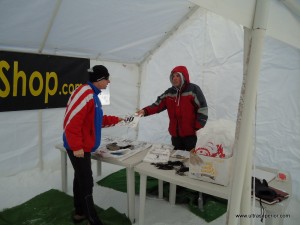
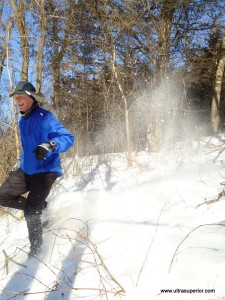
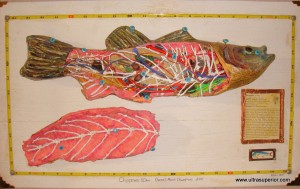
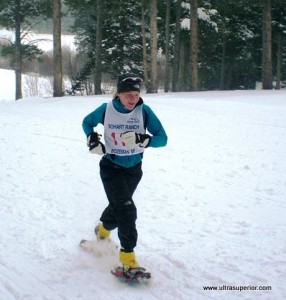
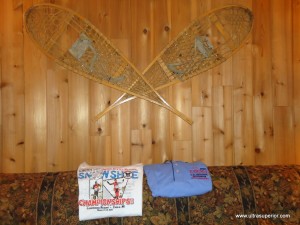
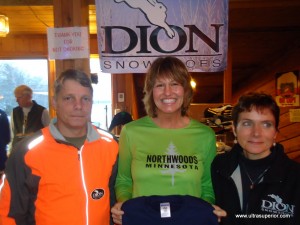
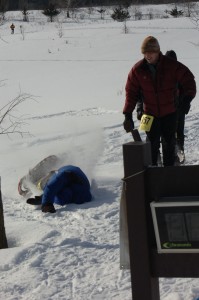
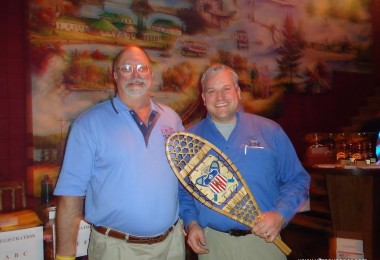
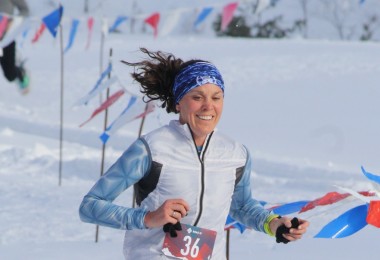
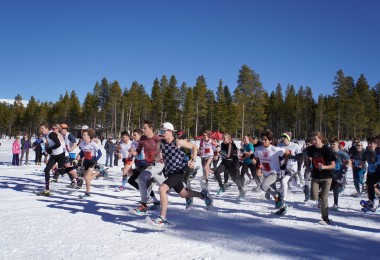
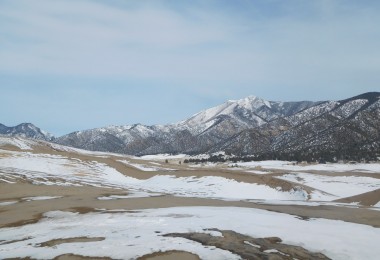

Leave a Comment